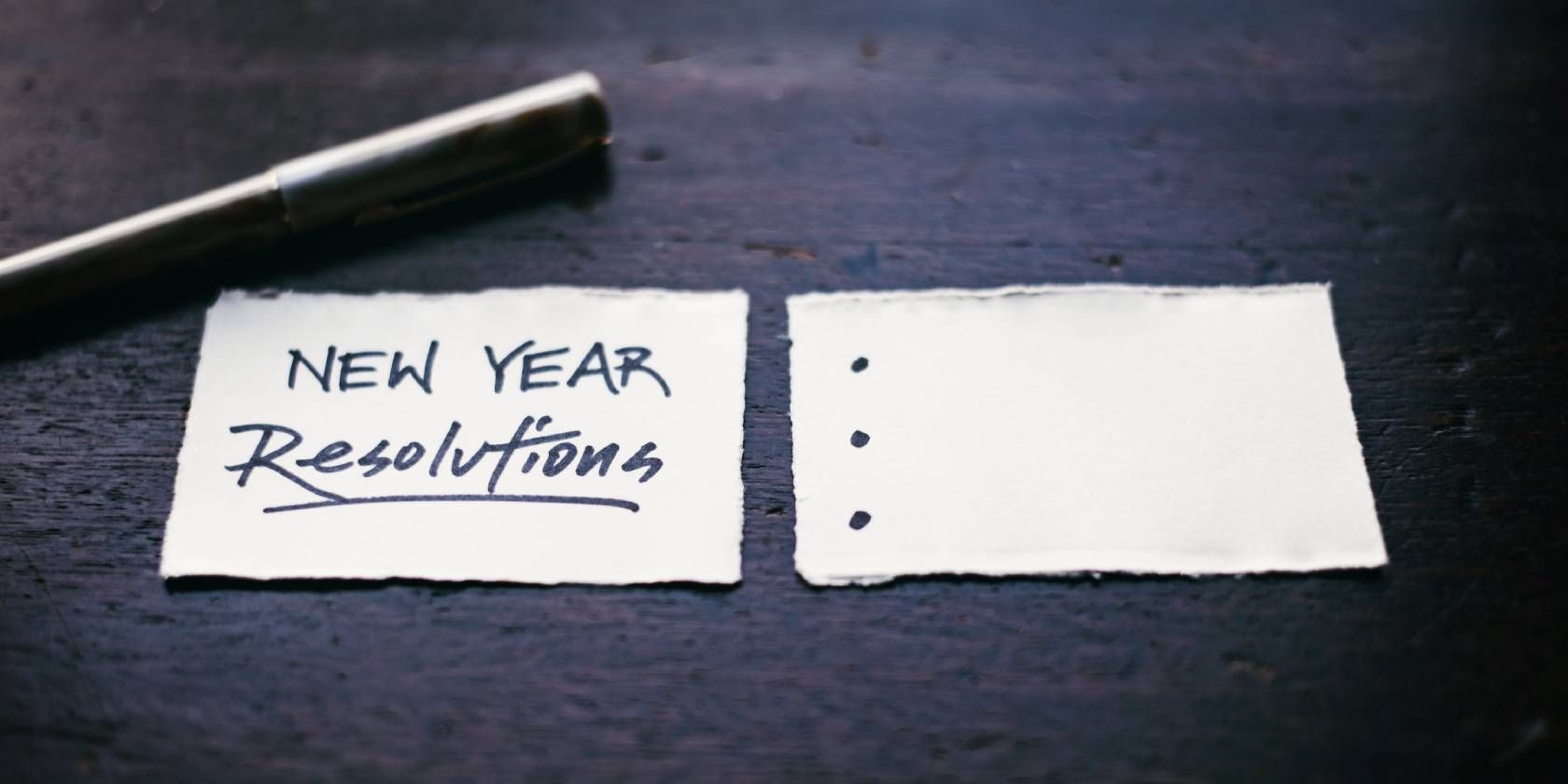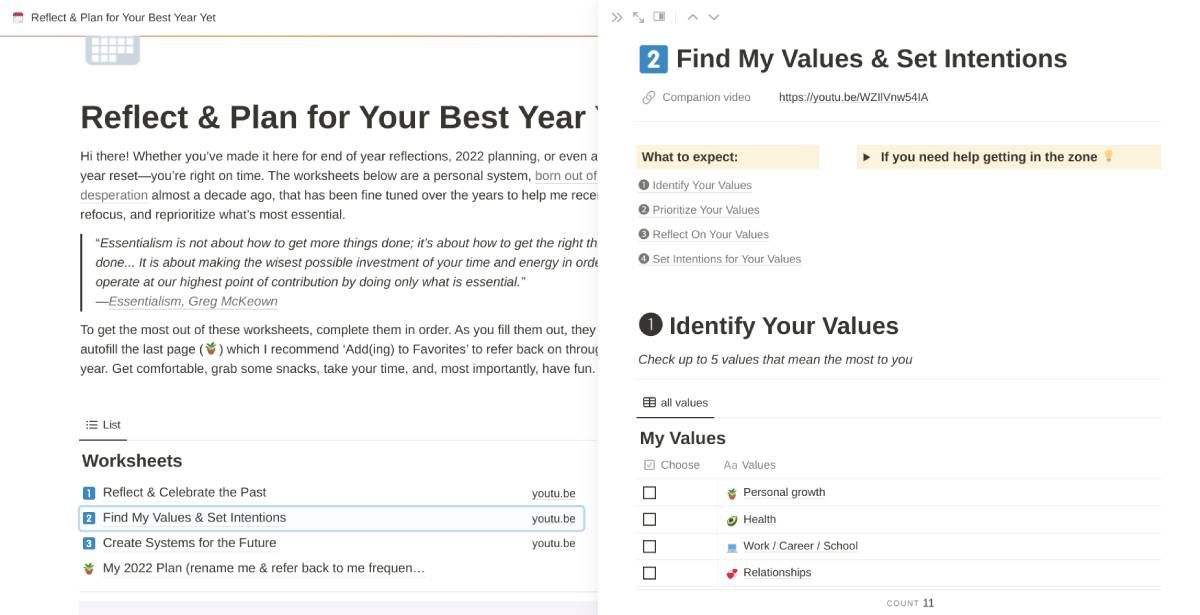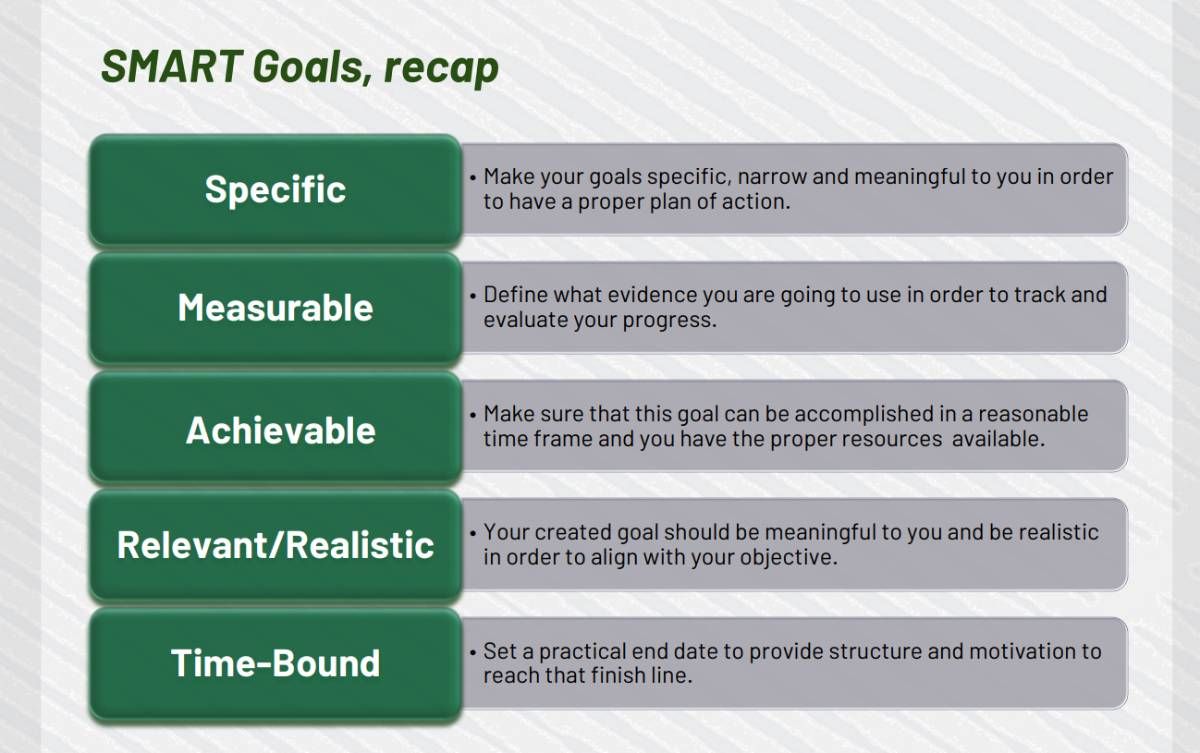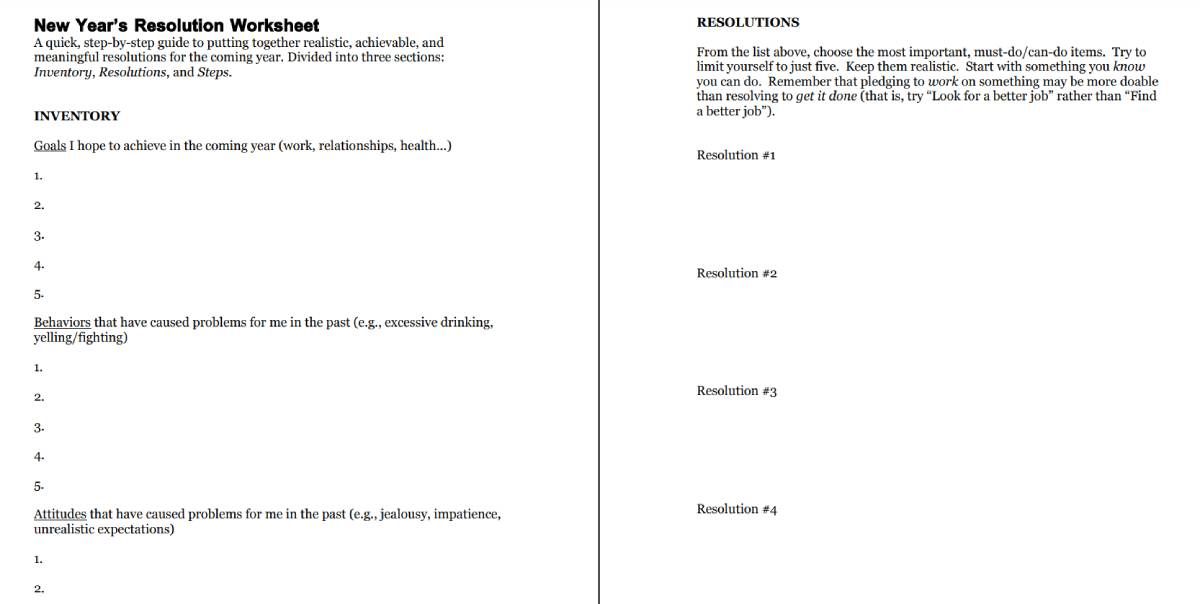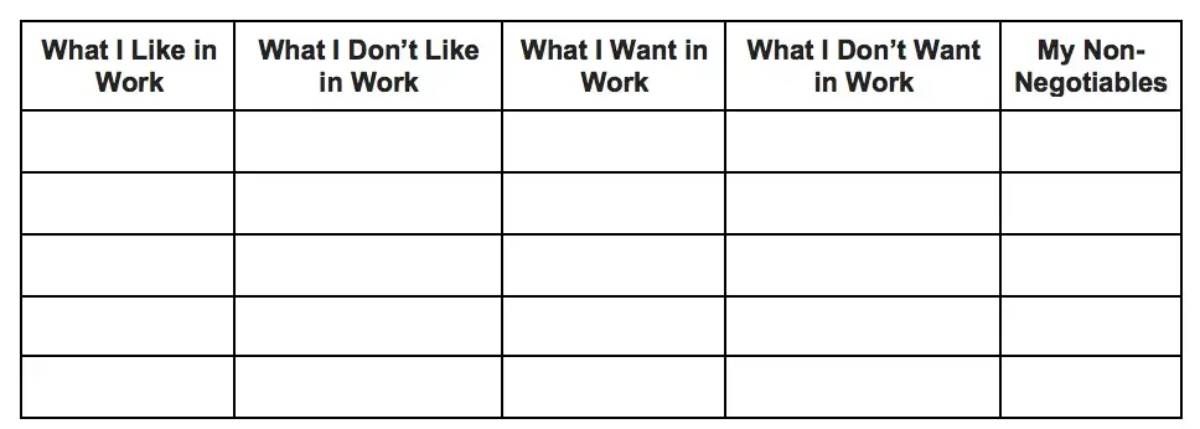Research indicates that about 92% of people fail at their new year's resolutions every year. In most cases, the reason is not willpower but the goal itself. People don't take the time to set goals that are meaningful and achievable.
If you want to be one of the other 8% to achieve your targets, these free online guides will help you set new year's resolutions and plan how to keep them. From simple 4-page worksheets to a massive 76-page free ebook, we've tried to explain what you can expect in each, so you can pick whichever method seems best for you.
1. Reflect and Plan (Notion): Review the Past Year and Set Resolutions for New Year
Rowena Tsai, a content creator focused on beauty and mindfulness, has made a free Notion template to help you review the year gone by and learn how to set resolutions for the new year. While it's not an app or an article, it leverages Notion's abilities to be perhaps the best-made of the items in this list.
Tsai breaks down the process into three main worksheets: reflect and celebrate the past, find my values and set intentions, and create systems for the future. Click any of these to open a tab that further explains how to accomplish the objective. Tsai has also made a companion video for each step, explaining what to add and exclude if the template itself isn't enough.
The second step of finding your values and setting intentions is the critical step here, where you identify what matters to you and prioritize them. Of course, you'll need to do the other worksheets to clarify your thoughts on this section and implement them. Once you've filled all the worksheets, move to the final worksheet for a one-page new year's plan.
2. SMART Resolutions Guidebook (PDF): How to Set Fitness Goals and Achieve Them
The most common new year's resolutions are getting fitter, losing weight, and achieving better mental health. Ohio University teamed up with health and wellness firm WellWorks to write a short guidebook that teaches people how to set this wellness journey using the SMART goal planning technique.
You'll learn the five steps of the SMART technique, i.e., making goals Specific, Measurable, Achievable, Relevant / Realistic, and Time-bound. It's a total of 28 pages, but several of them are like slides of a Powerpoint presentation, so it's not that much reading to do.
While the SMART technique could be applied to any non-health goals as well, the guidebook focuses on this alone. It breaks down health goals into movement, fuel, rest and recovery, and stress management. Each type of goal offers multiple examples of what someone's resolution is and how to break it down into a SMART goal. After learning from those, you can use the last page to set your own SMART new year's resolution.
3. New Year's Resolutions Guidebook (Ebook): Productivity Principles for Resolutions
Productivity expert Chris Bailey wrote an extensive guide to ensure anyone can understand the pitfalls of setting the wrong goals and what you need to do to ensure you achieve your targets. It clocks in at over 74 pages, but it's completely free and doesn't include any ads, signups, or other subversive marketing tactics.
From page 9 to page 25, Bailey dives into the hidden costs of resolutions, how to know your values using what he calls "hotspots," and choosing your resolutions. Bailey also recommends the SMART goal plan to set your targets, but in addition, he also has advice on how to break them down into smaller units and make them challenging at the same time.
Bailey then uses methods from other productivity experts to ensure you act upon your objectives, like Charles Duhigg's habit loop method and GTD inventor David Allen's advice on keeping resolutions. The "Get It Done" section is especially interesting, as it shows how to use several popular productivity systems for what you want to achieve.
The New Year's Resolutions Guidebook is available as a free download in both PDF and EPUB formats. It's one of the best tools to make new year's resolutions work.
4. Will Baum's Worksheet (PDF): Psychotherapist's 4-Page Plan for NY Resolutions
Dr. Will Baum is a licensed psychotherapist who has worked with several types of mental help programs. While at a 28-day crisis program, Baum created a worksheet for patients to set new year's resolutions, which has become one of the most popular resources shared on the internet.
The worksheet is just four pages long. Baum's target was to break down the goal-setting process into simple steps that lead to realistic, achievable, and meaningful resolutions. It's divided into three main sections:
- Inventory: List what goals you hope to achieve in the coming year, which behaviors have caused problems for you in the past, and which attitudes have caused problems in the post.
- Resolutions: Based on your inventory, set five realistic resolutions that you know you can do. Baum also advises making your goals work in progress rather than finite end objectives.
- Steps: List three key steps for each resolution that you know you can get done.
Once you're done filling out the worksheet, Baum recommends finding someone you are comfortable reading out the sheet to. Even if you don't have anyone like that, read it out aloud to yourself.
5. "What I Want" Matrix (Web): Ultimate Guide to Setting and Keeping Better NY Resolutions
Author and entrepreneur Alida Miranda-Wolff's masterful Medium article is worth the hype in the title: it really is the ultimate guide to setting and keeping better New Year's Resolutions. Most of the article features advice on how to set your targets to be realistic and meaningful, as that's the best way to ensure you actually do them.
Miranda-Wolff has five key pieces of advice, and she expands on them in detail in the article. Here's a precis of what to expect:
- The "What I Want" Matrix: Miranda-Wolff's own system to clarify your career-focused resolutions.
- Journal Reflections and Bucket Lists: How to go through your journals or wishlists to find what you really want.
- Past Year Reviews: Productivity guru Tim Ferriss's method to reflect on the year gone by.
- 10-Year Plan: A series of questions to figure out where you want your life to be in 10 years.
- Avoiding the "Should" Trap: Two exercises to set goals you actually want to achieve, not what you think you should be doing.
Find New Year Resolutions Too Intimidating? Try the 12-Month Plan
As these guides indicate, you shouldn't set a new year's resolution casually. There is a process that will ensure the goal is meaningful and realistic. But if you find that too daunting, try Harvard's 12-month plan to choose and keep a resolution.
Each month is dedicated to a small step in the overall process of setting and committing to a goal. You can take the whole of January to set that goal, then the whole of February to commit to a process, and the whole of March to find your motivation. It's slower, but it's less pressure. Trying to better yourself isn't a sprint, so go as slow as you need to.

